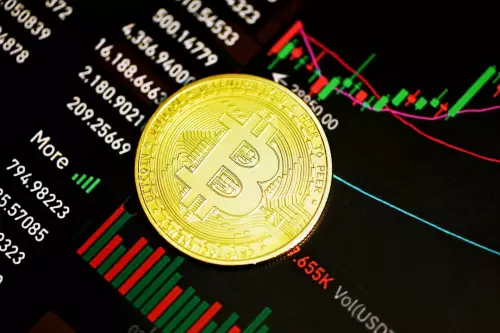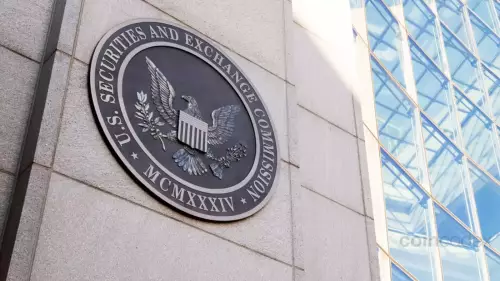 |
|
 |
|
 |
|
 |
|
 |
|
 |
|
 |
|
 |
|
 |
|
 |
|
 |
|
 |
|
 |
|
 |
|
 |
|
Cryptocurrency News Articles
Hong Kong's Tokenized Bond Push: A New Era for Digital Finance?
Sep 27, 2025 at 11:30 pm
Hong Kong is solidifying its position as a digital finance hub with a focus on tokenized bonds. Recent regulatory moves and issuances signal a commitment to innovation in the bond market.

Hong Kong is making waves in the digital finance space, particularly when it comes to tokenizing bonds. With new regulations and successful issuances, is Hong Kong poised to become a leader in this emerging market?
Hong Kong's Bold Roadmap for Bonds
Hong Kong regulators are serious about boosting bond issuance and diving deeper into RMB markets. They've rolled out ten measures focused on tokenized assets, including a third batch of tokenized green bonds and a new stablecoin licensing regime. This isn't just talk; it's a clear signal that Hong Kong wants to be a major player in digital finance.
The Securities and Futures Commission (SFC) and the Monetary Authority (HKMA) have released a comprehensive roadmap built on four key pillars: expanding issuance, strengthening secondary-market liquidity, growing offshore renminbi capacity, and building next-gen infrastructure. Since 2019, Hong Kong has issued HK$386 billion in multi-currency bonds, showing they're ready to lead the charge with state-backed supply.
Tokenization in Action
Tokenization isn't just a concept in Hong Kong; it's a reality. Previous issuances raised significant capital through tokenized green bonds. Now, a third batch is on the way, with plans to test settlement on both the asset and funding sides. This directly connects with the HKMA’s e-HKD+ and Project Ensemble pilots, which are testing wholesale CBDC for tokenized deposits and cross-border payments.
Infrastructure and Regulation Catching Up
Hong Kong isn't just issuing bonds; they're building the infrastructure to support them. The Hong Kong Exchanges and Clearing Limited (HKEX) has launched digital asset indexes for Bitcoin and Ethereum. On the regulatory front, a stablecoin licensing regime is now in effect, placing fiat-backed stablecoin issuance under HKMA supervision. Officials are even considering tax breaks, like stamp-duty exemptions for tokenized ETFs, to lower entry costs.
What This Means for Traders
For those in the trading world, this means a few key things: sovereign supply is deepening bond curves, tokenized bonds are integrating with CBDC rails, and stablecoins are under regulatory oversight. It's a comprehensive approach that could make Hong Kong a hub for digital asset innovation.
A Personal Take
It's exciting to see Hong Kong taking such a proactive stance on tokenization. The combination of regulatory support, infrastructure development, and real-world issuances suggests that they're serious about creating a vibrant digital asset ecosystem. The recent news that Chinese institutions have been ordered to scale back their crypto-related operations in Hong Kong makes the region's commitment to digital assets even more impressive. This contrarian approach could give Hong Kong a significant edge in the long run.
The integration of tokenized bonds with CBDC rails and the regulatory oversight of stablecoins create a more stable and secure environment for digital asset trading. It's a win-win for both issuers and investors, and it could pave the way for more widespread adoption of tokenized assets.
Looking Ahead
Hong Kong's moves in the tokenized bond market are a clear indication that digital finance is here to stay. With a proactive regulatory approach and a commitment to innovation, Hong Kong is positioning itself as a leader in this exciting new frontier. Who knows, maybe someday soon, buying a bond will be as easy as ordering a pizza online. Now that's progress!
Disclaimer:info@kdj.com
The information provided is not trading advice. kdj.com does not assume any responsibility for any investments made based on the information provided in this article. Cryptocurrencies are highly volatile and it is highly recommended that you invest with caution after thorough research!
If you believe that the content used on this website infringes your copyright, please contact us immediately (info@kdj.com) and we will delete it promptly.






























































